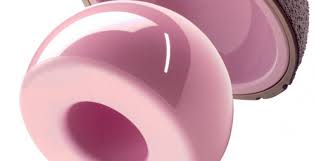 Ceramic-on-ceramic bearing surfaces may increase risk of squeaking, total implant fracture in THA (Healio)
Ceramic-on-ceramic bearing surfaces may increase risk of squeaking, total implant fracture in THA (Healio)
A meta-analysis of randomized, controlled trials found ceramic-on-ceramic bearing surfaces in total hip arthroplasty increased the risk of squeaking and total implant fracture significantly compared with ceramic-on-polyethylene bearing surfaces; however, no significant differences were observed between bearing surfaces with regard to revision, osteolysis and radiolucent lines, loosening, dislocation or deep infection, according to study results.
After reviewing the PubMed, Embase and Cochrane online databases, researchers identified 83 articles that initially met the inclusion criteria of involving patients who underwent primary total hip arthroplasty (THA); comparing ceramic-on-ceramic (COC) and ceramic-on-polyethylene (COP)bearing surfaces; reporting clinical and radiographic outcomes of THA, with at least one desirable outcome; having a randomized, controlled study design; and being published in English.
The researchers performed a meta-analysis comparing clinical and radiographic outcomes achieved by the two bearing surfaces. Additionally, using the Physiotherapy Evidence Database scale, the researchers assessed the methodological quality of each study. Ultimately, nine randomized, controlled trials that encompassed 1,575 patients and 1,747 hips were selected for inclusion in the final study.
Eight of these studies were considered to have high methodological quality, according to the researchers. However, because the heterogeneity between the studies was not significant, all of the results were pooled with the use of a fixed-effects model.
The pooled results demonstrated a significantly increased risk of squeaking and total implant fracture with the use of COC bearing surfaces compared with the use of COP bearing surfaces. However, the researchers found no significant evidence with regard to increased risk for revision, osteolysis and radiolucent lines, loosening, dislocation or deep infection based on the type of bearing surface used.
Patients who received COC bearing surfaces also demonstrated no increased risk for deep venous thrombosis, pulmonary embolus, heterotopic ossification, trochanteric bursitis or leg-length discrepancy compared with those who received COP bearing surfaces.
The researchers concluded that the meta-analysis provided no conclusive evidence demonstrating any clinical or radiographic advantages between the two bearing surfaces during the short- and long-term follow-up periods. – by Monica Jaramillo
Disclosure: The researchers report no relevant financial disclosures.

 The Orthopedics Industry
The Orthopedics Industry